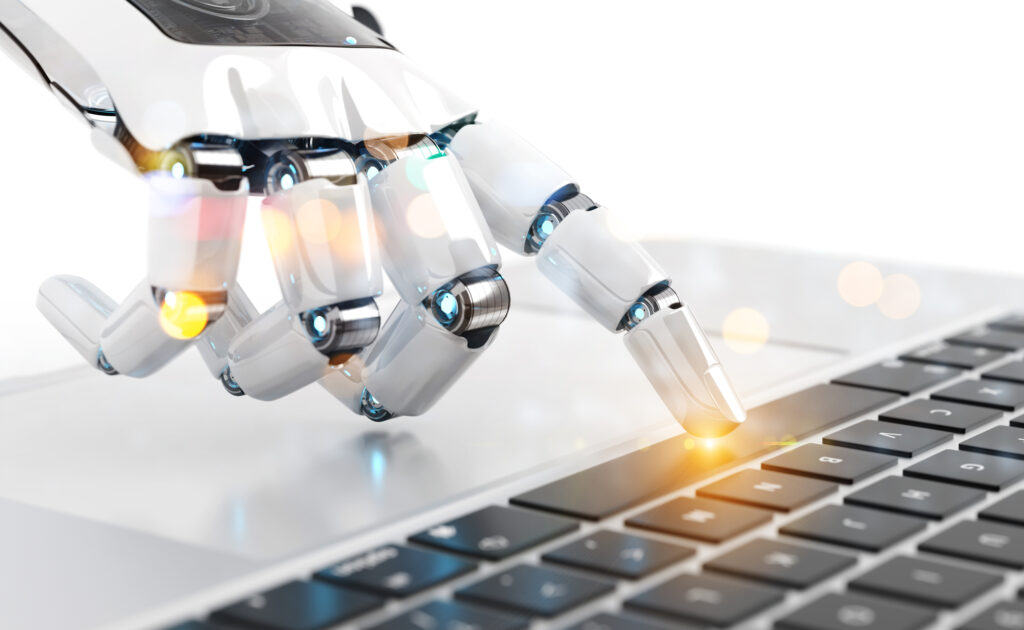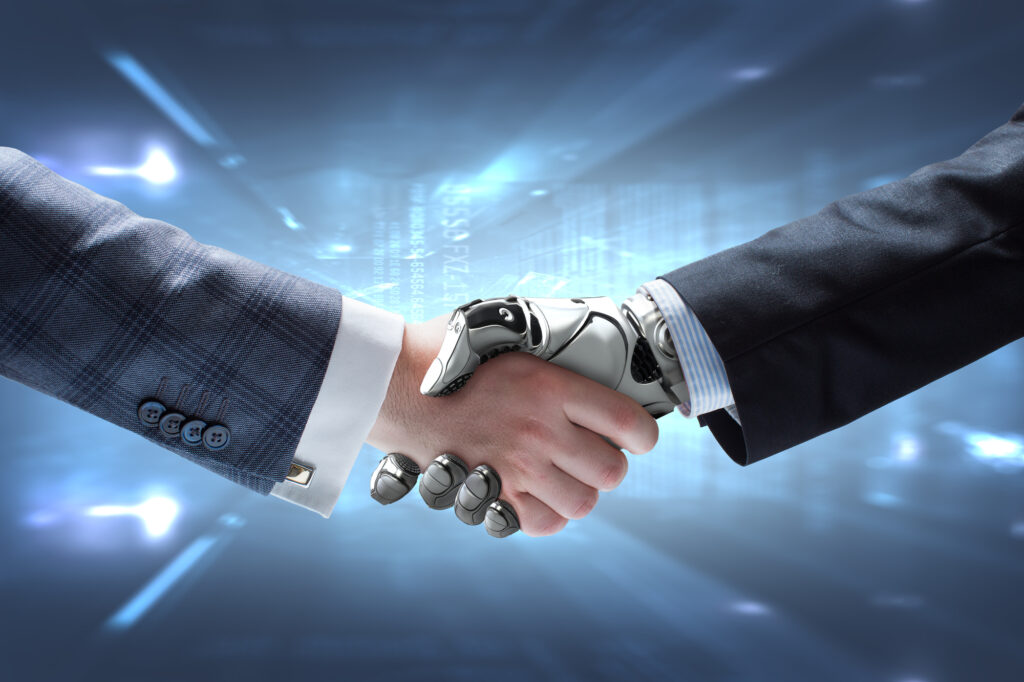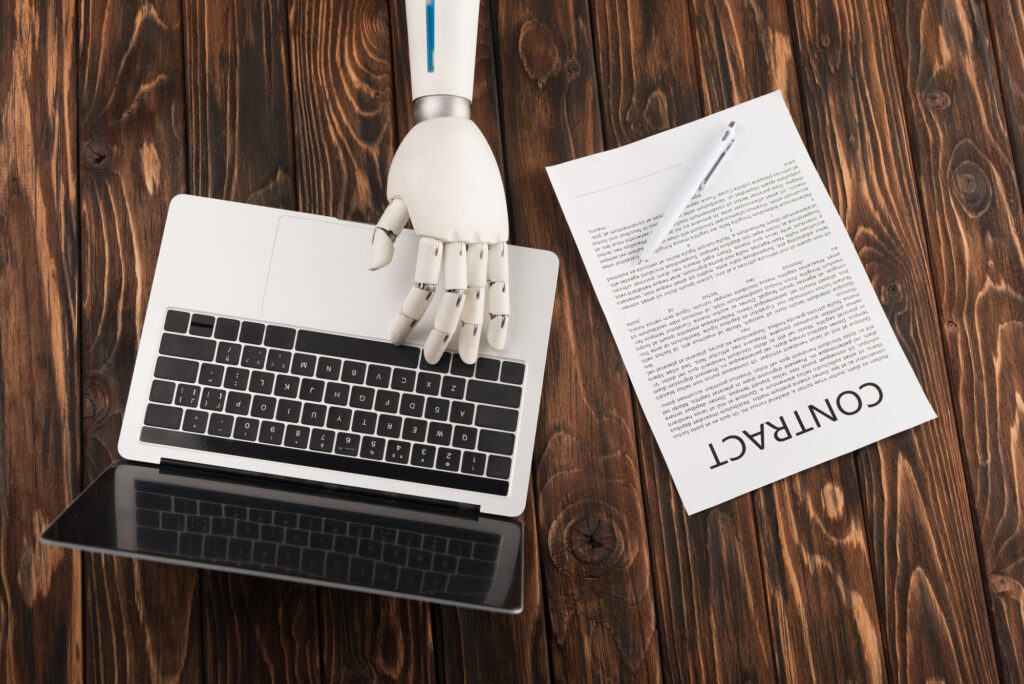Artificial intelligence has gained a lot in popularity within the marketing industry. According to Statista, 80% of marketing experts incorporate some form of AI in their online activities.
If you are like me, and you haven’t seen AI in anything other than science fiction, such as I, Robot, or Black Mirror, you may be wondering what AI is and how it can be used in marketing.
Does AI look like it does in movies? This article will examine the definition of AI and the types of AI as well as how AI can be used to improve marketing processes.
What is Artificial Intelligence?

Artificial intelligence (AI) is the use of computer systems for tasks that require human intelligence. Examples include visual perception, speech translation, problem-solving, decision-making, and problem-solving.
Now that you’ve learned what AI is let’s look at how it works.
What is AI?
AI uses intelligent algorithms that combine large data sets with repetitive, intelligent processing to identify patterns and features in the data. AI continually processes the data and learns.
The AI system measures and tests its performance within each round of processing data to gain more expertise.
AI can perform thousands or even millions of tasks in rapid succession, improving its performance over time. There are many different types of AI. Each has its capabilities and limitations.
What are the four types of artificial intelligence?

Artificial intelligence can be classified into four different types: reactive, limited memory (limited memory), theory of mind, and self-awareness.
Reactive
A reactive AI is limited to using its intelligence only to respond and react to the world. It cannot store memories, so it can’t use past experiences to guide real-time problem-solving or decision-making.
Reactive machines are limited to a certain number of tasks. Although this may seem like a disadvantage, it does have its benefits. Reactive AIs will always react in the same manner to the same stimuli, making them reliable and trustworthy.
Deep Blue is one of the best-known examples of reactive AI. It was created by IMB and won a chess game against Garry Kasparov in the 1990s. Deep Blue was able to identify the pieces on the chessboard and determine how they could move according to the rules of the game.
The AI was unable to predict its opponent’s next moves or to think of ways to place its piece in a more advantageous position.
Limited Memory
AI with limited memory stores data and makes predictions, and then use them to make decisions. It looks at past data to predict the future. A machine learning model that is constantly trained to analyze and utilize new data is called limited memory AI.
Six steps are required to implement AI with limited memory.
- Create the training data.
- Create a machine learning model.
- Predictive capabilities can be enabled by the model.
- Feedback from humans or the environment can be used to improve your model.
- Save the feedback as a data file.
- Continue to repeat all of the steps above in a loop.
Self-driving vehicles are an example of AI with limited memory. Self-driving vehicles can identify pedestrians, traffic signals, and other data to avoid accidents.
HubSpot’s adaptive testing is another example of AI with limited memory. The adaptive testing feature initially splits traffic equally between different page variations.
HubSpot adjusts the traffic automatically as it learns about the performance of the variations. This way, the best-performing variations will be shown more often than the worst-performing ones.
Theory of Mind
The theory of mind AI is exactly what it sounds like theoretically. Theory of mind AI is still at the innovation stage. This type of AI is designed to interact with human emotions and thoughts. The theory of mind helps AIs better understand the entities that they interact with, so they can understand what they need, believe, feel, and think.
We now know, for example, that self-driving vehicles are a type of AI with a limited mind. These autonomous cars would become Theory of Mind AI if they could understand and analyze their drivers’ emotional and mental states to improve safety.
Self-awareness
Self-awareness will emerge as the next AI type once the theory of mind becomes a reality. Machines will be able to understand their own emotions and mental state. Self-aware AIs will be able to understand their existence and that of others and have a consciousness similar to humans.
AI Marketing: How Can Marketers Use It?

AI can automate parts of the Marketing Process, such as campaign personalization and data analysis so that you can spend more time on strategy and less on repetitive tasks.
Instead of spending time manually entering this data, the AI will automate it for you. The AI will automate the process instead of you spending hours manually inputting this data.
AI: Pros and Cons
Now that you’ve learned what AI is, the four types, and how it works, let’s look at the pros and cons.
Artificial Intelligence: The Pros
Fewer errors
Humans are capable of making mistakes. They can miss deadlines, misspell, or do the math incorrectly. Human nature is to be distracted or burnt out. You can reduce the chance of error by implementing an automated system run by AI.
24/7 Uptime
AI can also run continuously and without interruption. AI can be programmed to run continuously and consistently as long as they are required. AI is therefore more efficient than humans at repetitive tasks. This allows marketers and business owners the opportunity to concentrate their efforts in other areas.
Can analyze large data sets quickly
Humans can make mistakes, as I said earlier. This is especially true when working with large data sets. To prevent mistakes, it would be best to work slower. However, time is money when it comes to marketing.
AI machines can process large quantities of data and information quickly, which makes them more efficient in times of deadline pressure.
Artificial Intelligence: The Cons
Lack of creativity
AI reacts to stimuli solely based on past data, so they are not suitable to create innovative solutions. Data from the future can be used to predict outcomes in the present, but it is not always sufficient to deal with a variable that has never been seen before.
AI is, therefore, better suited to “grunt”, or mundane, work. In marketing, humans are better suited to develop creative marketing strategies, while AI is more suited to repetitive tasks.
Personal
Human connection can be the best way to build a stronger relationship with your audience. Although a self-aware AI may be possible shortly, AI machines today cannot mimic human experience perfectly.
Implementing AI into every customer interaction from a marketing standpoint can cause a rift with your audience. There’s a good reason why many of us shouted, “Speak to a Representative!” When we are tired of talking to a machine on the phone.
AI and Marketing: The Future
According to Grand View Research, the global AI market will reach $1,811.8 Billion by 2030. This is up from $136.6 Billion in 2022.
Artificial intelligence, the theory of mind, and self-awareness all sound like futuristic concepts. AI is already here, and it will continue to grow across all industries in the coming years.
Marketers must be aware of the pros and cons of AI and be open to using it to streamline processes to stay competitive.